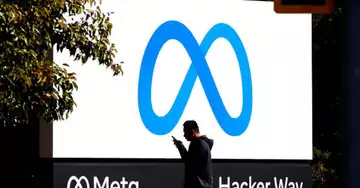Instagram's NFT pilot is the first step in a monetization strategy for creators that has yet to fully mature.
Shortly after unveiling its "Digital Collectibles" product on Monday, the Meta-powered social media platform signaled its interest in turning non-fungible tokens (NFTs) into a revenue stream for creators serving its more than one billion users.
How these can be used has yet to be figured out. At launch, Instagram's NFT pilot will only allow a handful of artists to share their digital art on the platform - with no sales, trades or fees.
Eventually, money will be added to the mix. In a Creator Blockchain Experiences job posting on Monday, Instagram sought help "defining the strategy and roadmap for new blockchain-enabled Creator Monetization Experiences."
Creators could use blockchain technology "to build connections with their fans that are meaningful, monetizable and discoverable anywhere," the job posting said. The product manager's job will be to help Instagram figure out how.
Jon Victor, who leads Web 3 and NFT strategy for crypto startup Protocol Labs, said millions of users on Instagram and other social media platforms are already selling goods and brand partnerships to their followers in the billion-dollar creator economy.
Not everyone will want NFTs, Victor warned. He pointed to the backlash from mainstream gamers that Ubisoft sparked with its botched entry into NFTs earlier this year. That could explain why Instagram is limiting its pilot project to a handful of creators and collectors for now.
If it succeeds in attracting those artists to NFTs, it will click with some of their fans: maybe just one or two percent. Considering the immense size of Instagram (its user base is in the billions), that still means huge business potential for Meta and its creators.
"There are organic communities forming around NFTs," he said, citing the PFP market as an example. "It makes sense that this idea can be extended to creators who are already building their own communities.
Instagram declined to comment for this article, but referred CoinDesk to recent statements from Meta CEO Mark Zuckerberg, who emphasized the platform's need to "leverage all the different ways creators can make money," including NFTs.
Meta's leadership has prioritized the "creator first" message in recent months, with Zuckerberg calling the monetization initiative critical to "differentiating our services from others" in a recent earnings announcement in April.
"One of the challenges we have to solve as an industry is how to help creators make a living doing what they love," Instagram CEO Adam Mosseri said in a video announcing the pilot.
Mosseri indicated that digital collectibles would not resonate with everyone. But the "subset of creators" who want it could use the opportunity in a meaningful, monetizable way, he said.
One such creator, a street artist who calls himself Masnah.eth on social media, makes his money by painting his clients' larger-than-life PFP NFTs on the sides of buildings - work he shares on Instagram.
Masnah.eth has been hesitant to get involved in Instagram's visions of an NFT-based creative economy, in part because it's too early to tell what form the initiative will take. "I need to get a good read on it first!" he said in a Twitter message.
Regardless, he said, he's not yet convinced.
"I don't see why I would pursue monetizing creators on Instagram," said Masnah.eth, who is already selling the rights to future street assignments as NFTs. "It doesn't really make sense to me."

